How To Vacation-Proof Tomato Plants: 4 Tips To Beat The Wilt & Keep Plants Thriving While You're Away
Don't just hope your tomatoes survive your summer trip. Prep plants for some time apart with these tips on how to care for tomatoes while you're on vacation.
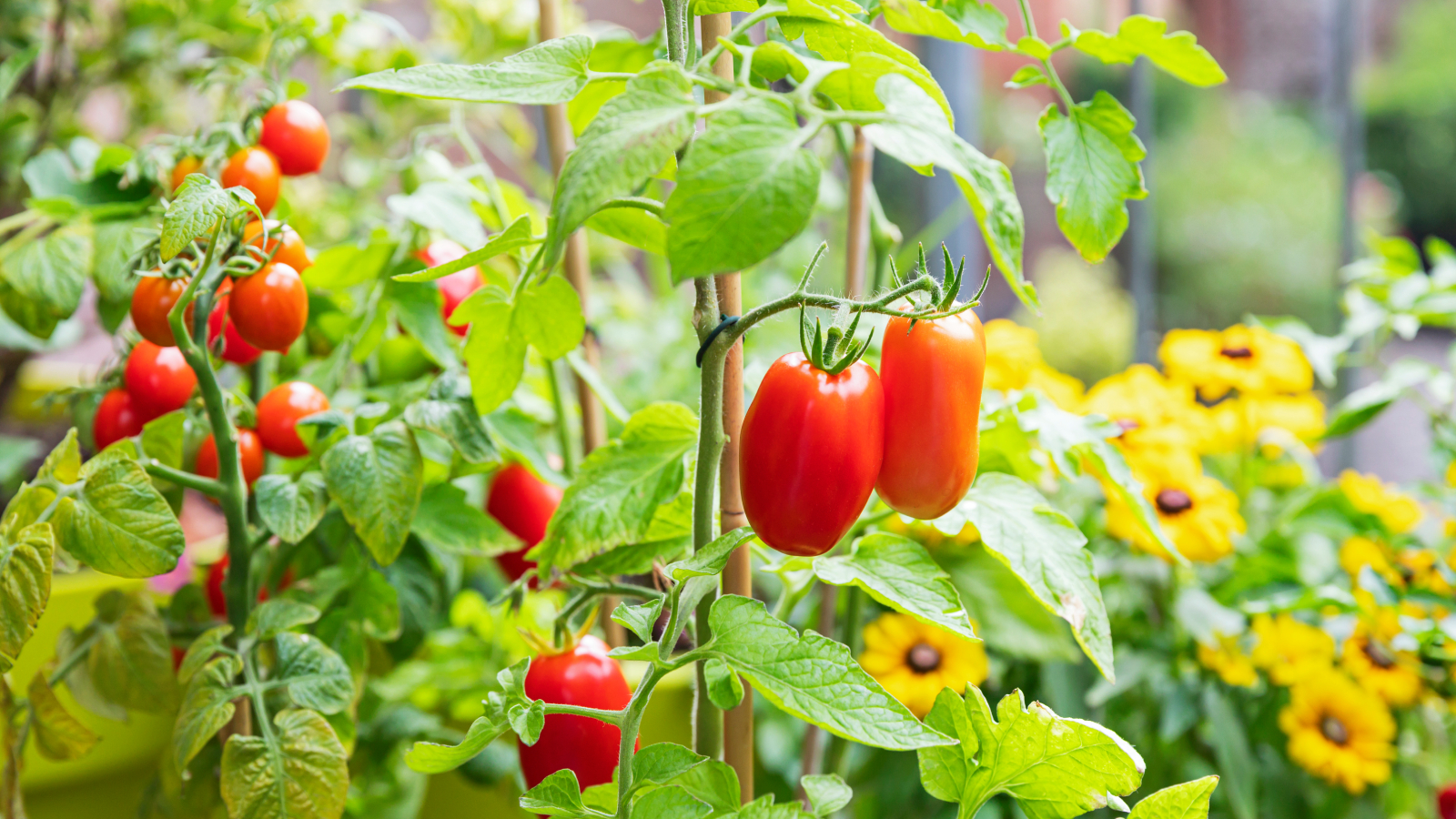

Good vegetable gardeners should know how to care for tomato plants while on vacation, since many of us take time away during the summer months when our gardens are at their peak. It’s entirely possible to keep your tomatoes growing strong while you’re away, all it takes is some extra prep and care before you go.
Figuring out how to water tomato plants while on vacation is often the biggest challenge and the first one you need to address before leaving town. Tomatoes are heavy water users, especially during fruiting. Since we grow tomatoes in the warm months of the year, they are prone to drying out. Even short periods of dryness can affect the quality of the fruit and the numbers of tomatoes the plant can produce. If you want a bumper crop, the first step is to figure out some way of providing adequate moisture.
Depending upon the duration of your vacation, your tomato plants have other needs. One of the key elements of perfecting how to grow tomatoes is training and pinching. If the plants are young, they will need pinching to remove the errant, non-fruiting growth at the branch nodes. If you don’t remove them, the plant will direct energy to growing more foliage rather than focusing on fruiting branches.
Indeterminate tomato varieties will also require caging or staking if you’re going to be gone more than a week. Even with such supports in place, they will need to be trained to their stake or cage with tying and gently moving plant material onto the structure.
High on the list when learning how to keep plants alive while on vacation is dealing with pests and disease. If you are away, you can’t visually identify and deal with these problems. Without an immediate address of pests, the plant can suffer ill health and may fail altogether.
The same goes with disease problems. When no steps are taken to minimize or eradicate disease symptoms, the whole tomato plant can die. It may be necessary to set up a “tomato sitter” of some sort, either family or a neighbor, who can help diagnose issues and handle them. Your tomato sitter can also provide adequate moisture, protection from extreme weather, and harvest as needed.
1. Keep Tomatoes Hydrated
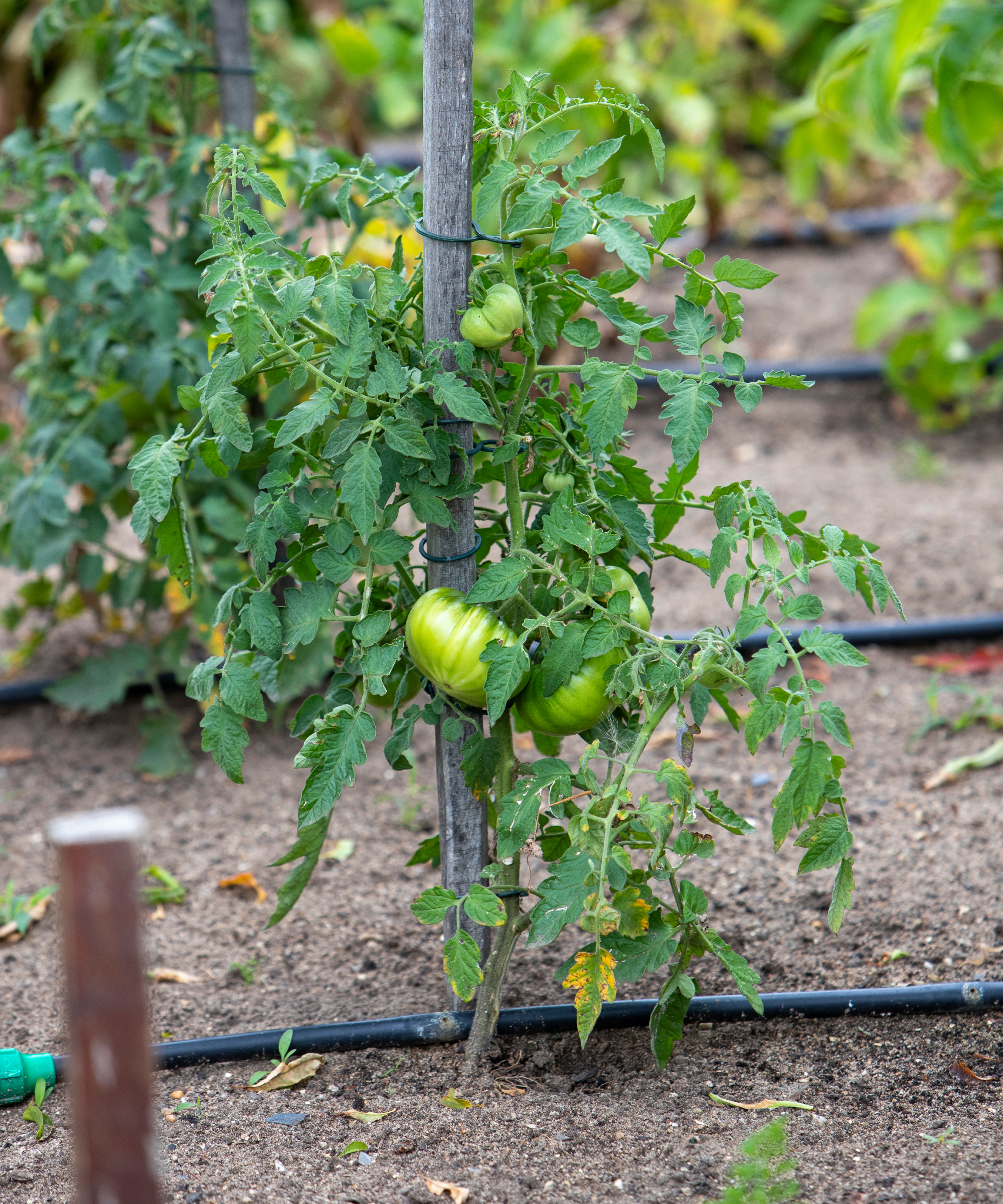
Keeping tomato plants hydrated is the most important part of caring for your vegetables while you are away on vacation. Here are some strategies and tools to help keep your tomatoes well-watered while you are gone.
Sign up for the Gardening Know How newsletter today and receive a free copy of our e-book "How to Grow Delicious Tomatoes".
Before you go on vacation, you can set your tomato plant up for success with a few simple steps. Firstly, if they are established and in the ground, slow down watering a week prior. This will get them used to less moisture.
Mulching around in-ground plants is a tremendous help. You can use organic or inorganic mulch, although I would avoid using gravel or rock because these have a tendency to hold onto too much heat. Some of the best types of mulch for tomatoes are fine bark, straw, or well-dried grass clippings. They will slowly compost into the soil and gently add nutrients as they break down.
Provide 1-2 inches (2.5-5 cm) of mulch around the root zone. This will help keep water in the soil. It will also help prevent those pesky weeds that compete with your tomato plants for nutrients and water.
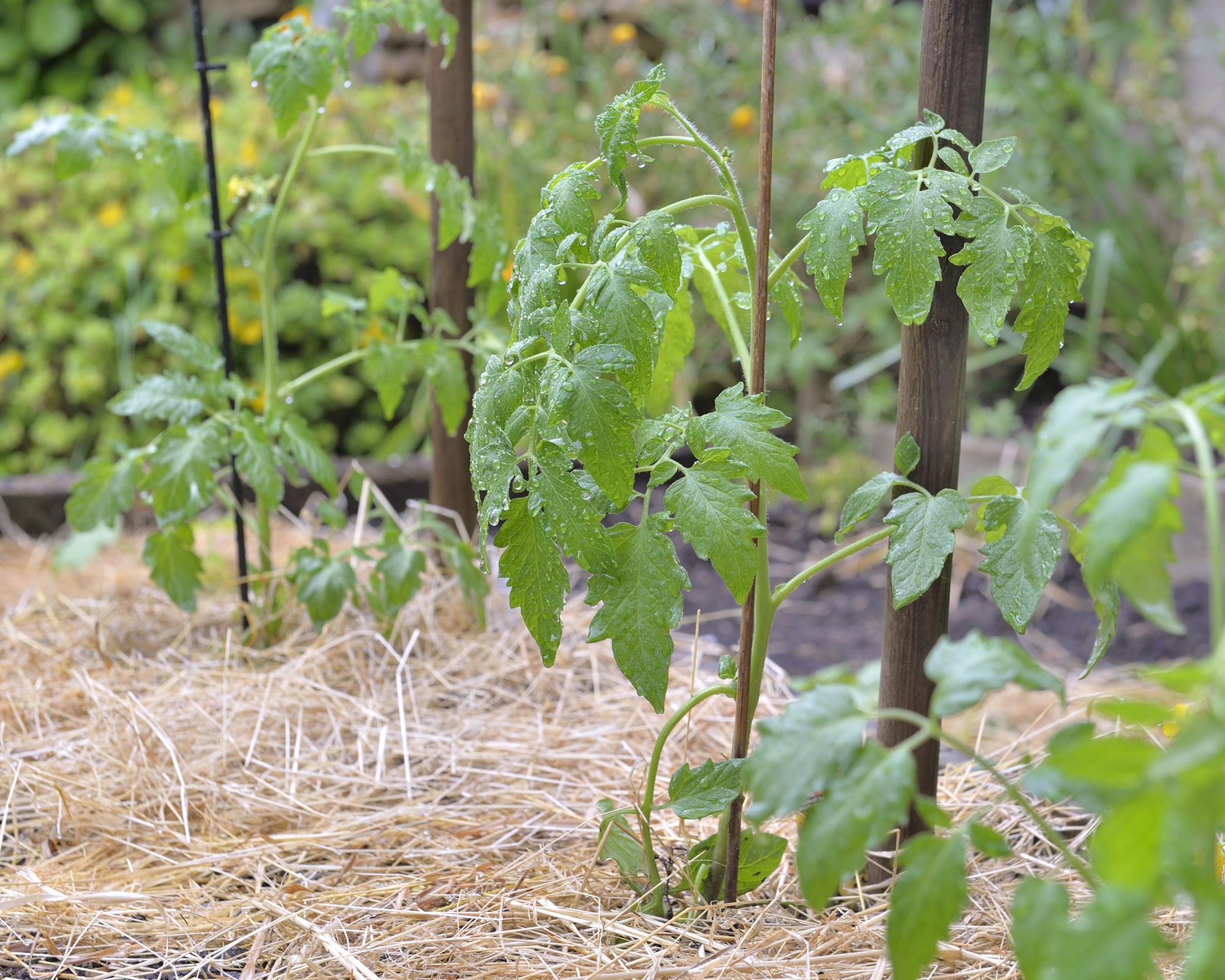
If you know you will be experiencing an extreme heat event then set up shade cloth, like one of these from Amazon, to protect the plant. Tomatoes like the sun and they like it hot, but too much heat can cause wilting, leaf scorch, and damage to the fruit.
If you are growing tomatoes in containers, move them to a dappled light area. This will slow the production of flowers a little bit, but it will help the potted plants conserve moisture and prevent sunburn.
Consider installing drip irrigation on a timer so the plants get regular watering delivered straight to the roots where the plant needs it the most. Our editor Laura loves this Orbit automatic hose timer from Amazon. She pairs it every summer with this easy-to-use drip irrigation kit from Home Depot. You might also use a soaker hose or water wick to create a DIY watering system.
Another one of our editors' favorite ways to water plants while on vacation is to turn a plastic bottle into an irrigator for containers. Drill a hole in the lid, fill the container with water, and suspend the lidded bottle upside down in the soil. If you’re going to be out of town for more than a few days, it’s a good idea to invest in a self-watering planter, like this one you can get in the Gardening Know How Shop that comes with a trellis and is available in three colors.
2. Harvest Before You Go
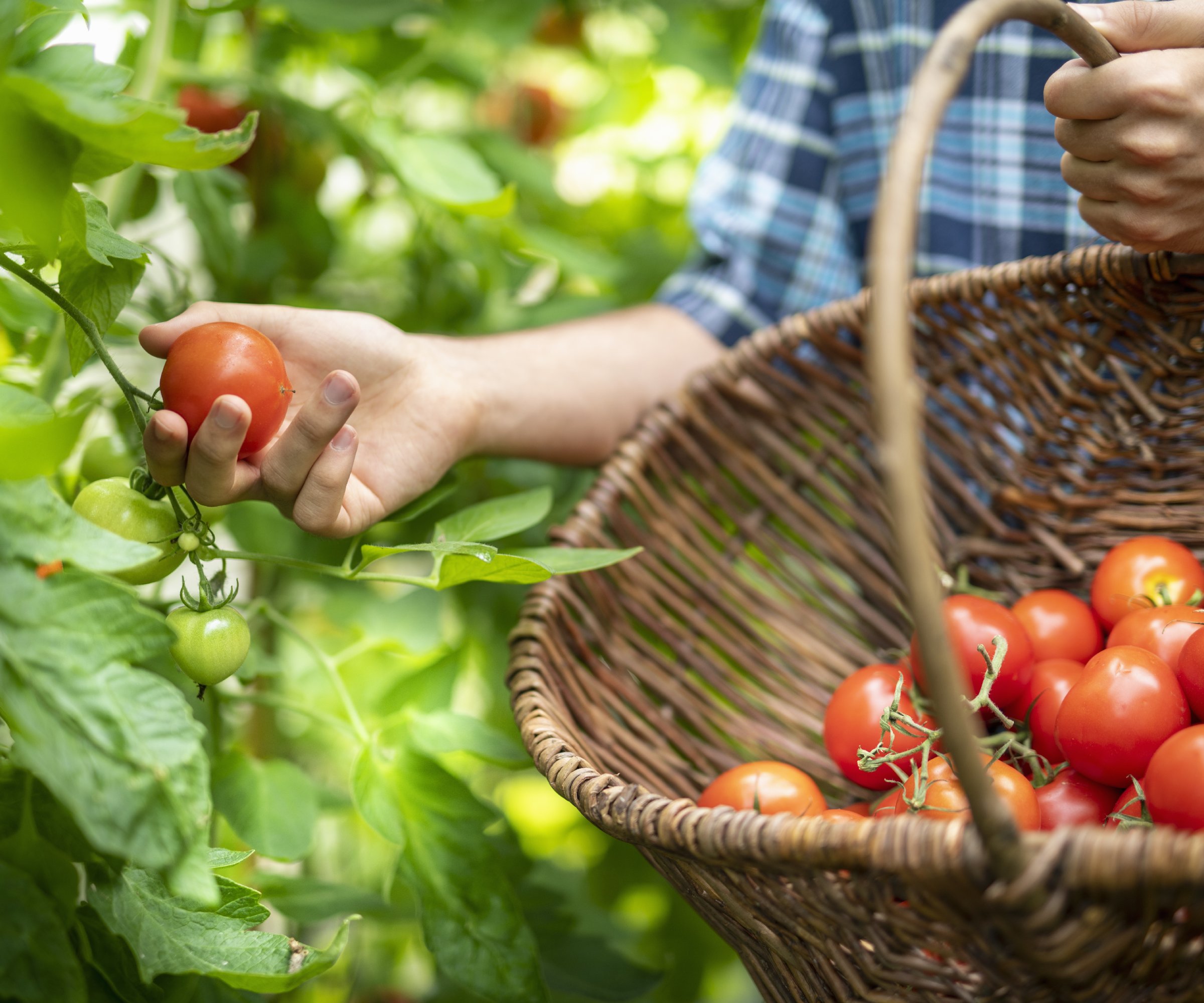
If your plant is fruiting, now is the ideal time to harvest your tomatoes. You can even take the ones that are orange and put them on a windowsill where they can finish ripening. Leave ripe fruits on the counter for a few days, or if you are going to be gone longer, place them in the vegetable crisper to keep them fresh until you return.
If you leave ripe fruits on the plant, they will spoil. But also the plant will direct its resources to those tomatoes rather than spend energy on making new flowers and fruits to keep the harvest going after you come home.
3. Prevent Pests & Diseases
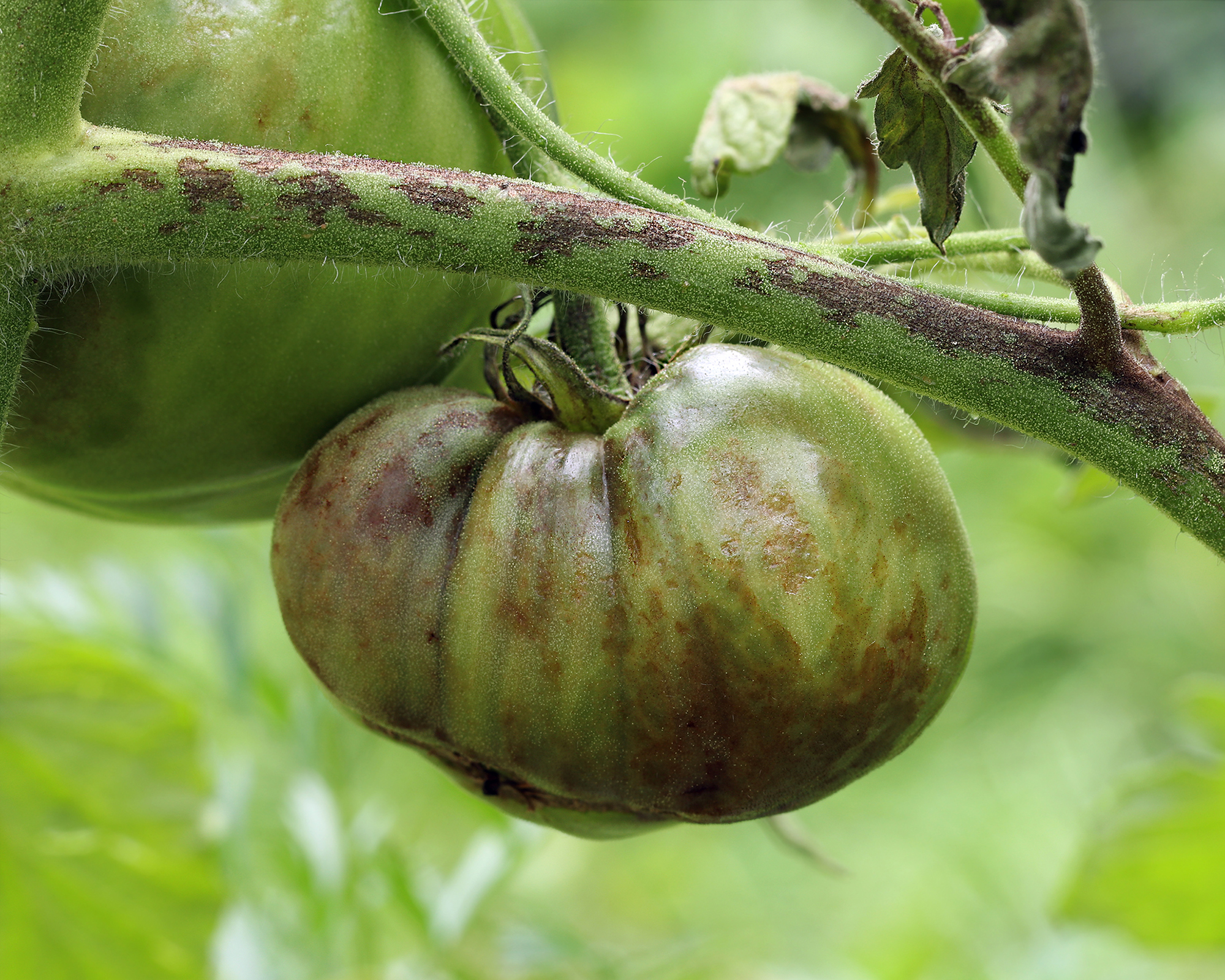
Prior to leaving on holiday, take a really good look at your plant. Vet it for any common tomato diseases or pests so you can nip those in the bud before you leave.
Remove any leaves that have become discolored or have been eaten by pests. Check under the leaves for insects and apply a spray listed for use on tomatoes. Tomato hornworms are one of the bigger pests and you can search and destroy these in the evening with a flashlight.
Consider using a long action spray for pests before you go such as a product with spinosad or an insecticidal soap spray. Or make your own with a bit of dish soap and water. Neem oil, like this organic spray from Amazon, and garlic water are also effective pest deterrents.
4. Prune & Train Your Plants
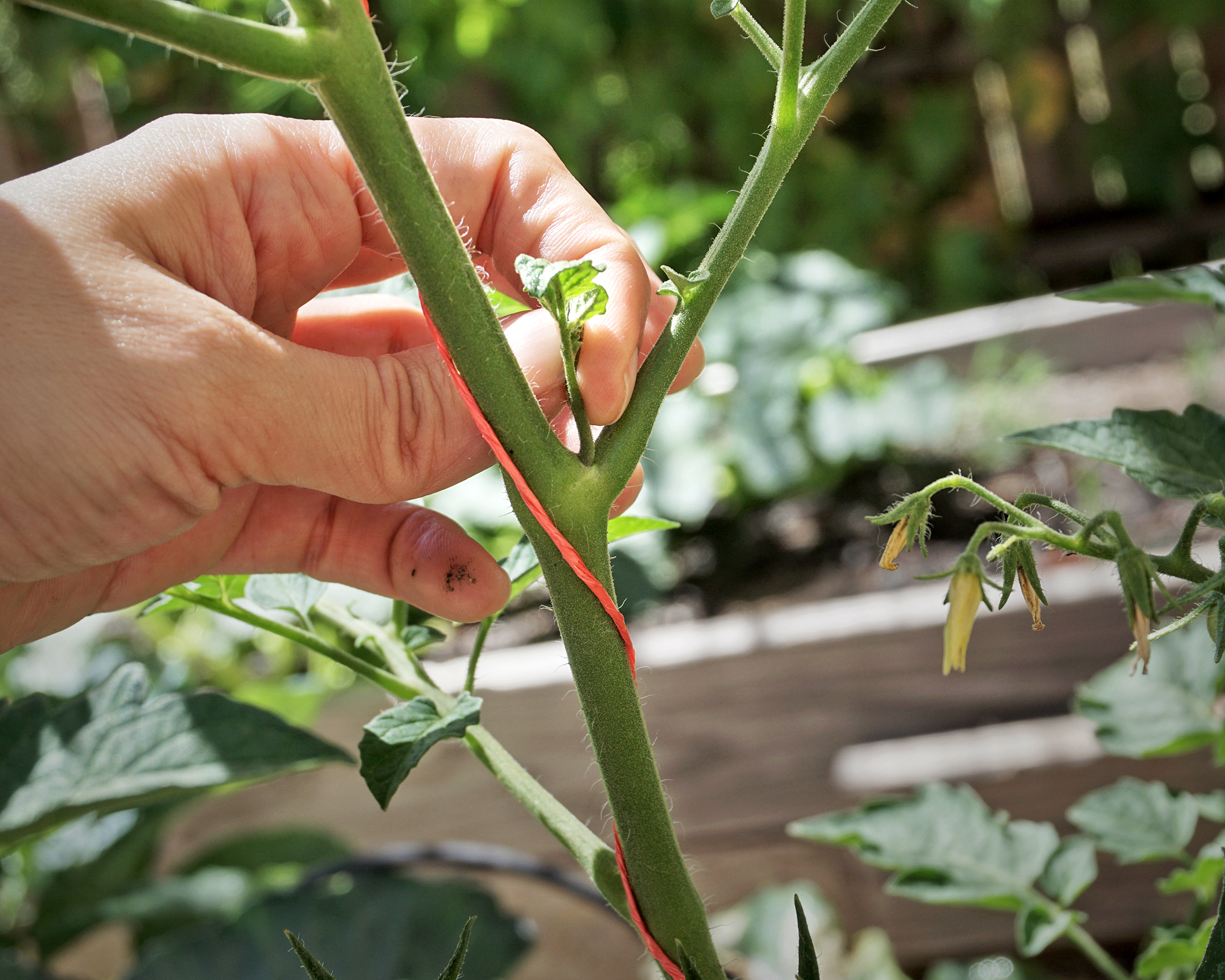
If the plant is still young and in training, remove tomato suckers at the leaf nodes. If your plant is fairly mature, prune out some of the densest foliage to increase air movement and prevent disease.
Remove any stems that have not set fruit or flowered as these are likely non-fruiting and can be cut away. This allows the plant to use all its energy only on producing stems. If it is growing too much foliage in the center, pinch out some of this greenery to increase airflow and allow sunlight to penetrate.
Tie indeterminate tomato varieties to support structures and consider adding some extra stakes in strategic spots to help hold new growth while you are away. Even determinate tomato varieties, with their heavy loads of fruit, will benefit from a tomato cage or similar structure to hold the stems up out of the soil.
With just a few simple steps, you can help ensure your plant survives and thrives while you are off enjoying a well-deserved vacation.
This article features products available from third party vendors on the Gardening Know How Shop. Keep in mind that our plant inventory is limited—so if you’re thinking of purchasing, don’t wait!

Bonnie Grant is a professional landscaper with a Certification in Urban Gardening. She has been gardening and writing for 15 years. A former professional chef, she has a passion for edible landscaping.